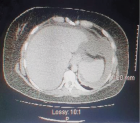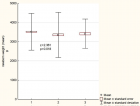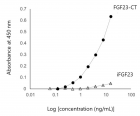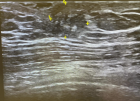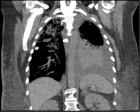Abstract
Research Article
Phytochemical content of leaf and stem of Marsilea quadrifolia (L.)
Rajangam Udayakumar* and Karikalan Gopalakrishnan
Published: 23 May, 2017 | Volume 1 - Issue 1 | Pages: 026-037
The present study was aimed to screen and quantify the phytochemicals by qualitative and quantitative analysis in methanol and aqueous leaf and stem extracts of Marsilea quadrifolia(L.). In qualitative analysis, the phytochemical compounds such as tannins, saponins, flavonoids, steroids, terpenoids, triterpenoids, alkaloids, carbohydrates, proteins, anthroquinones, phenolic compounds and phytosterol were screened. Among these phytocompounds tannins, saponins, flavonoids, steroids, alkaloids, carbohydrates, proteins and phenolic compounds were observed in methanol and aqueous leaf and stem extracts of M. quadrifolia. Anthroquinones were absent in both leaf and stem extracts of M. quadrifolia. The content of phenolic compounds 8.34±0.92 mg/g and 7.31±0.46 mg/g, flavonoids 7.46±0.64 mg/g and 6.45±0.68 mg/g, alkaloids 6.12±0.51 mg/g and 5.89±0.61 mg/g, tannins 6.58±0.72 mg/g and 6.07±0.56 mg/g and saponins 5.32±0.48 mg/g and 6.30±0.58 mg/g were determined in leaf and stem of M. quadrifolia, respectively. So, the present study confirmed that the presence of phytocompounds in leaf and stem of M. quadrifolia.
Read Full Article HTML DOI: 10.29328/journal.jpsp.1001003 Cite this Article Read Full Article PDF
Keywords:
Marsilea quadrifolia; Leaf; Stem; Phytocompounds; Methanolic; Aqueous
References
- Ncube NS, Afolayan AJ, Okoh AI. Assessment techniques of antimicrobial properties of natural compounds of plant origin: current methods and future trends. Afr J Biotechnol. 2008; 7: 1797-1806. Ref.: https://goo.gl/haE1w1
- Mehta Kavit, Patel BN, Jain BK. Phytochemical analysis of leaf extract of Phyllanthus fraternus. Research Journal of Recent Sciences. 2013; 2: 12-15.
- Edeoga HO, Okwu DE, Mbaebie BO. Phytochemical constituents of some Nigerian medicinal plants. Afr J Biotechnol. 2005; 4: 685-688. Ref.: https://goo.gl/rCK3LA
- Vasu K, Goud JV, Suryam Z, Suryam A, Charya S. Biomolecular and phytochemical analyses of three aquatic angiosperms. Afr JMicrobiol Res. 2009; 3: 418-421. Ref.: https://goo.gl/kpw0XY
- Cowan MM. Plant products as antimicrobial agents. Clin Microbiol Rev. 1999; 564-582. Ref.: https://goo.gl/kKE4rO
- Etkin NL. Medicinal cuisines: diet and ethnopharmacology. Int J Pharm.1996; 34: 313-326. Ref.: https://goo.gl/KckvgV
- AmeyawY, Duker-Eshun G. The alkaloid contents of the ethno-plant organs of three antimalarial medicinal plant species in the eastern region of Ghana. Int J ChemSci. 2009; 7: 48-58 Ref.: https://goo.gl/EYMlbL
- Gopalakrishnan K, Udayakumar R. GC-MS Analysis of Phytocompounds of Leafand Stem of Marsilea quadrifolia (L.). International Journal of Biochemistry Research & Review. 2014; 4: 517-526. Ref.: https://goo.gl/7PMo2p
- Mahesh B, Satish S. Antimicrobial activity of some important medicinal plant against plant and human Pathogens. World J Agric Sci. 2008; 4: 839-843. Ref.: https://goo.gl/wbyfrm
- Janakiraman N, Johnson M, Sahaya Sathish S. GC-MS analysis of bioactive constituents of Peristrophe bicalyculata (Retz.) Nees. (Acanthaceae). Asian Pac J Trop Biomed. 2012; 2: 46-49. Ref.: https://goo.gl/4WRRr8
- Balamurugan K, Nishanthini A, Mohan VR. GC-MS analysis of Polycarpaea corymbosa (L.) Lam whole plant. Asian Pac J Trop. 2012; 2: 1289-1292. Ref.: https://goo.gl/5w5QZp
- Nisha K, Darshana M, Madhu G, Bhupendra MK. GC-MS analysis and anti-microbial activity of Psidium guajava (leaves) grown in Malva region of India. Int J Drug Dev & Res. 2011; 3: 237-245. Ref.: https://goo.gl/XvSdbP
- Mehdi SJ, Ahmad A, Irshad M, Nikhat Manzoor, Moshahid Alam Rizvi M. Cytotoxic effect of Carvacrol on human cervical cancer cells. Biology and Medicine. 2011; 3: 307-312. Ref.: https://goo.gl/MhzIwW
- Huang MT, Ho CT, Lee CY. Phenolic compounds in food and their effects on health. II: Antioxidants and cancer prevention. Amer Chem Soc Sym Seri. 507. Washington: American Chemical Society.1992; 2-7.
- Hertog MG, Feskens EJ, Holloman PC, Katan MB, Kromhout D. Dietary antioxidant flavonoids and risk of caronary heart disease. Lancet. 1993; 342: 1007-1011. Ref.: https://goo.gl/CVf5wZ
- Diaz MN, Frei B, Vita JA, Keaney JF Jr. Antioxidants and atherosclerotic heart disease. New Engl. J. Med. 1997; 337: 408-416. Ref.: https://goo.gl/NiGqNq
- Ito N, Hirose M. Antioxidants-carcinogenic and chemo-preventive properties. Adv Cancer Res. 1989; 53: 247-302. Ref.: https://goo.gl/rWuiZX
- Ness AR, Powles JW. Fruit and vegetables and cardiovascular disease: a review. Int J Epidemiol. 1997; 26: 1-13. Ref.: https://goo.gl/wMFkws
- Yang B, Kotani A, Arai K, Kusu F. Estimation of the antioxidant activities of flavonoids from their oxidation potentials. Anal Sci. 2001; 17: 599-604. Ref.: https://goo.gl/ZEznOp
- Nakayoma J, Yamada M, Osawa T, Kawakishi S. Suppression of active oxygen-induced cytotoxicity by flavonoids. Biochem Pharmacol. 1995; 45: 265-267. Ref.: https://goo.gl/7WdnSe
- Ahmed A, Khan KA, Ahmad VU, Qazi S. Antibacterial Activity of Juliflorine Isolated from Prosopis juliflora. Planta Med. 1986; 4: 285-288. Ref.: https://goo.gl/xM3mWj
- Chung KT, Wong TY, Wei CI, Huang YW, Lin Y. Tannins and human health: a review. Crit Rev Food Sci. 1998; 38: 421- 464. Ref.: https://goo.gl/4El1jp
- Bravo L. Polyphenols: chemistry, dietary sources, metabolism and nutritional significance. Nutrition Reviews. 1998; 56: 317-333. Ref.: https://goo.gl/oIzH05
- Scalbert A. Antimicrobial properties of tannins. Phytochem. 1991; 30: 3875-3883 Ref.: https://goo.gl/QDzmvx
- Hostettmann K, Marston A. Saponins. Vol 1. 1st ed. Cambridge: Cambridge University Press. 1995.
- Liu J. Henkel T. Traditional Chinese medicine (TCM): are polyphenols and saponins the key ingredients triggering biologicial activities? Curr Med Chem. 2002; 9: 1483- 1485. Ref.: https://goo.gl/Iu2nxC
- Oakenfull D. Saponins in the treatment of hypercholesterolemia, In: Spiller GA (ed.) Handbook of Lipids in Human Nutrition. CRC Press. 1996; 107-112. Ref.: https://goo.gl/ODzkTN
- Shams-Ghahfarokhi M, Shokoohamiri MR, Amirrajab N, Moghadasi B, Ghajari A, et al. In vitro antifungal activities of Allium cepa, Allium sativum and ketoconazole against some pathogenic yeasts and dermatophytes. Fitoterapia. 2006; 77: 321-323. Ref.: https://goo.gl/Mv0wtw
- Man S, Gao W, Zhang Y, Huang L, Liu C. Chemical study and medical application of saponins as anti-cancer agents. Fitoterapia. 2010; 81: 703-714. Ref.: https://goo.gl/1QBRse
- Soni P, Singh L. Marsilea quadrifolia linn.-A valuable culinary and remedial fern in Jaduguda, Jharkhand, India. Life Science. 2012; 2: 99-106. Ref.: https://goo.gl/YmocMA
- Sofowara A. Medicinal plants and Traditional medicine in Africa. Spectrum Books Ltd, Ibadan, Nigeria.1993; 191-289.
- Hagerman A, Muller I, Makkar H. Quantification of tannins in tree foliage. A laboratory manual, Vienna: FAO/IAEA. 2000; 4-7.
- Kumaran A, Karunakaran R. Antioxidant and free radical scavenging activity of an aqueous extracts of Coleus aromaticus. Food chemistry, 2006; 97: 109-114. Ref.: https://goo.gl/iWY8PO
- Harborne JB. Phytochemical methods, London. Chapman and Hall. Ltd. 1973; 49-188.
- Schendrel SH. Methods in food analysis Academic Press 1970; 749-756.
- Obadoni BO, Ochuko PO. Phytochemical studies and comparative efficacy of the crude extract of some homeostatic plants in Edo and Delta states of Nigeria. Global J Pure Appl Sci. 2001; 8: 203-208. Ref.: https://goo.gl/qSWkkL
- Aiyelaagbe OO, Paual Osamudiamen M. Phytochemical Screening For Active Compounds in Mangifera indica Leaves from Ibadan. Oya State. Plant Sci Res. 2009; 2: 11-13.
- Wadood A, Ghufran M, Jamal SB, Naeem M, Khan A, et al. Phytochemical Analysis of Medicinal Plants Occurring in Local Area of Mardan anal biochem. 2013; 2: 2-4 Ref.: https://goo.gl/rxYb5W
- Sofowra A. Medicinal plants and Traditional medicine in Africa. Spectrum Books Ltd, Ibadan, Nigeria.1993; 191-289.
- Kaileh M, Berghe WV, Boone E, Essawi T, Haegeman G. Screening of indigenous Palestinian medicinal plants for potential anti-inflammatory and cytotoxic activity. J Ethnopharmacol. 2007; 113: 510-516. Ref.: https://goo.gl/wjCGhW
- Shu YZ. Recent natural products based drug development: a pharmaceutical industry perspective. J Nat Prod. 1998: 61: 1053-1071 Ref.: https://goo.gl/hnWk0O
- Zhang D, Hamauzu Y. Phenolic compounds and their antioxidant properties in different tissues of carrots (Daucuscarota L.). Food Agric Env. 2004; 2: 95-100. Ref.: https://goo.gl/izLVHL
- Rao Y, Fang S, Tzeng Y. Antiinflammatory activities of flavonoids isolated from Caesalpinia pulcherrima. J Ethnopharmacol. 2005; 100: 249-253. Ref.: https://goo.gl/4SLBIs
- Newman DJ, Cragg GM, Snader KM. The influence of natural products upon drug discovery. Nat Prod Rep. 2000; 17: 175-285. Ref.: https://goo.gl/4JSqZZ
- Tiwari P, kumar B, Kaur M, G Kaur, H Kaur. Phytochemical screening and extraction: A review. International Pharmaceutical Sciencia. 2011; 1: 98-106.
- Zibbu G, Batra A. GC-MS analysis of the desert plants of Apocynaceae family: Nerium oleander L. and Thevetiaperuviana Schum. International Journal of Pharmaceutical Research and Development. 2011; 3: 49-62.
- Fernie AR, Trethewey RN, Krotzky AJ, Willmitzer L. Metabolite profiling: from diagnostics to system biology. Nat RevMol Cell Biol. 2004; 5: 763-769. Ref.: https://goo.gl/ALwIyE
- Singh R, Singh SK, Kumar S, Arora S. Evaluation of antioxidant potential of ethyl acetate extract/fractions of Acacia auriculiformis. A Cunn Food Chem Toxicol. 2007; 45: 1216-1223. Ref.: https://goo.gl/F76Fki
- Han X, Shen T, Lou H. Dietry polyphenols and their biological significance. Int J Mol Sci. 2007; 8: 950-988. Ref.: https://goo.gl/nVjJFs
- Harborne JB. Introduction to ecological biochemistry. 4th edition. Academic Press. London. 1993. Ref.: https://goo.gl/xfFPp7
- Yen GC, Duh PD, Tsai CL. Relationship between antioxidant activity and maturity of peanut hulls. J Argic Food Chem. 1993; 41: 67-70. Ref.: https://goo.gl/uu95Ka
- Duh PD, Tu YY, Yen GC. Antioxidant activity of water extracts of HarngJyur (Chyrsanthemum morifolium) of the families Combretaceae and Labiatae. J Ethnopharmacol. 1999; 37: 269-277. Ref.: https://goo.gl/Zf9C00
- Tanaka M, Kuei CW, Nagashima Y. Application of antioxidative maillrad reaction products from histidine and glucose to saridine products. Nippon Suisan Gakkaishil. 1998; 54: 1409-1414. Ref.: https://goo.gl/vdM5hZ
- Agarwel PK. Carbon-13 NMR of flavonoids. New York: Elsevier. 1989.
- Bors W, Heller W, Michel C, Saran M. Flavonoids as antioxidants:determination of radical scavenging efficiencies. Methods Enzymol. 1990; 186: 345-355. Ref.: https://goo.gl/3ojISG
- Cook NC, Samman S. Flavonoids-chemistry, metabolism, cardioprotective effects, and dietary sources. Nutr Biochem. 1996; 7: 66-76. Ref.: https://goo.gl/9g9lfO
- Saboonchian F, Jamei R, Sarghein SH. Phenolic and flavonoid content of Elaeagnus angustifolia L. (leaf and flower). Avicenna J Phytomed. 2014; 4: 231-238. Ref.: https://goo.gl/ITGHX1
- Tackie AN, Schiff PL, Cryptospirolepine Jnr. A Unique Spiro-Noncyclic Alkaloid Isolated from Cryptolepis Sanguinolenta. J. Natural Products. 1993; 56: 653-65.
- Tiana F, Lia B, Jia B, Yanga J, Zhangb G, et al. Antioxidant and antimicrobial activities of consecutive extracts from Gallachinensis: the polarity affects the bioactivities. Food Chem. 2009: 113: 173-179. Ref.: https://goo.gl/u4ceUs
- Francis G, Kerem Z, Makkar HP, Becker K. The biological action of saponins in animal systems: a review. Br J Nutr. 2002; 88: 587-605. Ref.: https://goo.gl/GHkWle
- Waller GR, Yamasaki K. Proceedings of an American Chemical Society Symposium on Saponins: Chicago, Illinois. 1995.
- Balandrin MF. Commercial Utilization of Plant-derived Saponins: An Overview of medicinal, Pharmaceutical and Industrial Applications, In: Waller GR and Yamasaki K. (eds) Saponins Used in Food and Agriculture: Plenum Press. 1996; 404: 1-14.
- Klausner A. Adjuvants: a real shot in the arm for recombinant vaccines. Nature Biotechnology. 1988; 6: 773-777. Ref.: https://goo.gl/RzKsU5
- Sun HX, Xie Y, Ye YP. Advances in saponin-based adjuvants. Vaccine. 2009; 27: 1787-1796. Ref.: https://goo.gl/XIq0g5
- Bachran C, Bachran S, Sutherland M, Bachran D, Fuchs H. Saponins in tumor therapy. Mini Rev Med Chem. 2008; 8: 575-584. Ref.: https://goo.gl/xJZM1X
- Sjolander A, Cox JC, Barr IG. ISCOMs: an adjuvant with multiple functions. J Leukoc Biol. 1998; 64: 713-723. Ref.: https://goo.gl/zaFVtz
- Bachran Ch, Heisler I, Bachran D, Dassler K, Matthias F, et al. Chimeric toxins inhibit growth of primary oral squamous cell carcinoma cells. Cancer Biol Ther. 2008; 7: 237-242. Ref.: https://goo.gl/uVYtHL
- Lee J, Koo N, Min DB. Reactive oxygen species, aging and antioxidative neutraceuticals. Comp Rev Food Sci Food Safety. 2004; 3: 21-33. Ref.: https://goo.gl/3S848g
- John de Britto A, Herin Sheeba Gracelin D, Benjamin Jeya Rathna Kumar P. Qualitative and quantitative analysis of phytochemicals in Marsilea minuta linn. Int J Pharm Bio Sci. 2013; 4: 800-805. Ref.: https://goo.gl/30Obi1
- Revathi M, Catharin Sara S. Phytochemical studies onlLeaves and Petiole extracts of Marsilea minuta L. International Journal of Science and Research. 2014; 3: 1872-1874
Similar Articles
-
Phytochemical content of leaf and stem of Marsilea quadrifolia (L.)Rajangam Udayakumar*,Karikalan Gopalakrishnan. Phytochemical content of leaf and stem of Marsilea quadrifolia (L.). . 2017 doi: 10.29328/journal.jpsp.1001003; 1: 026-037
-
Wild-type Agrobacterium rhizogenes-mediated gene transfer in plants: Agrobacterium virulence and selection of transformantsShu Wei*,Muhammad Abdullah,Ferdinand L Shamalla,Mohammad M Rana. Wild-type Agrobacterium rhizogenes-mediated gene transfer in plants: Agrobacterium virulence and selection of transformants. . 2017 doi: 10.29328/journal.jpsp.1001005; 1: 044-051
-
Pharmacological effects of Nephrolepis exaltata L. (fern) aqueous extract on an insect-based model (Nauphoeta cinerea)Sandro Rostelato-Ferreira*,Danrley Mariel Egidio Sanchez,Jocimar de Souza,Yoko Oshima-Franco. Pharmacological effects of Nephrolepis exaltata L. (fern) aqueous extract on an insect-based model (Nauphoeta cinerea). . 2018 doi: 10.29328/journal.jpsp.1001017; 2: 031-036
-
Control of phytopathogenic microorganisms of post-harvest in tomato (Lycopersicon esculentum Mill.) with the use of citrus extractRueda Puente Edgar Omar*,Ruíz-Alvarado Cristina,Juan José Reyes-Pérez,Hernández-Montiel Luis Guillermo,Amador Bernardo. Control of phytopathogenic microorganisms of post-harvest in tomato (Lycopersicon esculentum Mill.) with the use of citrus extract. . 2018 doi: 10.29328/journal.jpsp.1001018; 2: 037-043
-
Assessing the stand size of bay trees (Persea spp.) after exposure to laurel wilt disease in a North Florida PreserveAnthony M Rossi*,Christopher Bentzien . Assessing the stand size of bay trees (Persea spp.) after exposure to laurel wilt disease in a North Florida Preserve. . 2019 doi: 10.29328/journal.jpsp.1001030; 3: 042-049
-
Causal agents of Post-harvest Rot of Pumpkin (Cucurbita pepo L.) and their control using Indigenous Practices in Hong, Adamawa StateAnjili SM*,Kazi N,Chimbekujwo IB. Causal agents of Post-harvest Rot of Pumpkin (Cucurbita pepo L.) and their control using Indigenous Practices in Hong, Adamawa State. . 2019 doi: 10.29328/journal.jpsp.1001033; 3: 062-066
-
Determination of anthocyanin content in two varieties of Hibiscus Sabdariffa from Selangor, Malaysia using a combination of chromatography and spectroscopyYew-Keong Choong*,Nor Syaidatul Akmal Mohd Yousof,Jamia Azdina Jamal,Mohd Isa Wasiman. Determination of anthocyanin content in two varieties of Hibiscus Sabdariffa from Selangor, Malaysia using a combination of chromatography and spectroscopy. . 2019 doi: 10.29328/journal.jpsp.1001034; 3: 067-075
-
Effect of Khaya Senegalensis Bark and Oil on Post-Harvest Fungal Agents of Groundnut Seeds Rot in Adamawa State, NigeriaChannya FK*,Asama P,Anjili SM . Effect of Khaya Senegalensis Bark and Oil on Post-Harvest Fungal Agents of Groundnut Seeds Rot in Adamawa State, Nigeria. . 2019 doi: 10.29328/journal.jpsp.1001035; 3: 076-080
-
Natural infection of squash fruits (Cucurbita pepo) by Zucchini Yellow Mosaic potyvirus (ZYMV) in Alexandria governorateMahmoud Hamdy Abd El-Aziz*. Natural infection of squash fruits (Cucurbita pepo) by Zucchini Yellow Mosaic potyvirus (ZYMV) in Alexandria governorate. . 2020 doi: 10.29328/journal.jpsp.1001047; 4: 028-032
-
An experimental study on effects of fluoridated water on Abelmoschus esculentus var. Soh-198 (Lady Finger) Arshi Iram*Arshi Iram*. An experimental study on effects of fluoridated water on Abelmoschus esculentus var. Soh-198 (Lady Finger) Arshi Iram* . . 2021 doi: 10.29328/journal.jpsp.1001056; 5: 017-019
Recently Viewed
-
A Retrospective Analysis of Maternal Mortality in a Tertiary Care Centre at District LevelDeepika Dhundi*, Kshama Kedar, Nova Shinde. A Retrospective Analysis of Maternal Mortality in a Tertiary Care Centre at District Level. Clin J Obstet Gynecol. 2024: doi: 10.29328/journal.cjog.1001166; 7: 064-068
-
Evaluation of Long-term Antithrombotic Management for Atrial Fibrillation Patients with a History of Coronary Stent ImplantationKirsten Vyhmeister, Paul Gavaza, Murphy Nguyen, Grace Kang, Huyentran N Tran*. Evaluation of Long-term Antithrombotic Management for Atrial Fibrillation Patients with a History of Coronary Stent Implantation. Ann Clin Hypertens. 2024: doi: 10.29328/journal.ach.1001035; 8: 001-006
-
Research of Potential Production 94mTc in Medical CyclotronGerman KE*, Rumyantsev AS, Manukova VA. Research of Potential Production 94mTc in Medical Cyclotron. J Clin Intensive Care Med. 2024: doi: 10.29328/journal.jcicm.1001050; 9: 027-030
-
Linagliptin Efficacy on Hyperglycemia, Oxidative Stress, and Inflammation in Gestational Diabetes MellitusFolasade Omobolanle Ajao*, Oluwatobi Olayiwola Yusuf, Damilola Ayodeji Balogun, Marcus Olaoye Iyedupe, Mariam Olayinka Adesola, George Adetomiwa Egunjobi. Linagliptin Efficacy on Hyperglycemia, Oxidative Stress, and Inflammation in Gestational Diabetes Mellitus. Clin J Obstet Gynecol. 2024: doi: 10.29328/journal.cjog.1001171; 7: 093-099
-
Extracorporeal Shock Wave Combined with Traditional Chinese Medicine Bone-setting Manipulation for External Humeral Epicondylitis: A Randomized Clinical TrialChangsui Yu, Zifeng Xu*, Liguo Zhu, Xiaofeng Zhang, Zhongbao Yu, Fengyuan Zhan, Xin Yu, Shuren Wang, Kejian Lu, Junjie Li, Xinyue Zhang, Daoxiong Gong. Extracorporeal Shock Wave Combined with Traditional Chinese Medicine Bone-setting Manipulation for External Humeral Epicondylitis: A Randomized Clinical Trial. J Sports Med Ther. 2024: doi: 10.29328/journal.jsmt.1001080; 9: 037-043
Most Viewed
-
Evaluation of Biostimulants Based on Recovered Protein Hydrolysates from Animal By-products as Plant Growth EnhancersH Pérez-Aguilar*, M Lacruz-Asaro, F Arán-Ais. Evaluation of Biostimulants Based on Recovered Protein Hydrolysates from Animal By-products as Plant Growth Enhancers. J Plant Sci Phytopathol. 2023 doi: 10.29328/journal.jpsp.1001104; 7: 042-047
-
Sinonasal Myxoma Extending into the Orbit in a 4-Year Old: A Case PresentationJulian A Purrinos*, Ramzi Younis. Sinonasal Myxoma Extending into the Orbit in a 4-Year Old: A Case Presentation. Arch Case Rep. 2024 doi: 10.29328/journal.acr.1001099; 8: 075-077
-
Feasibility study of magnetic sensing for detecting single-neuron action potentialsDenis Tonini,Kai Wu,Renata Saha,Jian-Ping Wang*. Feasibility study of magnetic sensing for detecting single-neuron action potentials. Ann Biomed Sci Eng. 2022 doi: 10.29328/journal.abse.1001018; 6: 019-029
-
Pediatric Dysgerminoma: Unveiling a Rare Ovarian TumorFaten Limaiem*, Khalil Saffar, Ahmed Halouani. Pediatric Dysgerminoma: Unveiling a Rare Ovarian Tumor. Arch Case Rep. 2024 doi: 10.29328/journal.acr.1001087; 8: 010-013
-
Physical activity can change the physiological and psychological circumstances during COVID-19 pandemic: A narrative reviewKhashayar Maroufi*. Physical activity can change the physiological and psychological circumstances during COVID-19 pandemic: A narrative review. J Sports Med Ther. 2021 doi: 10.29328/journal.jsmt.1001051; 6: 001-007

HSPI: We're glad you're here. Please click "create a new Query" if you are a new visitor to our website and need further information from us.
If you are already a member of our network and need to keep track of any developments regarding a question you have already submitted, click "take me to my Query."






